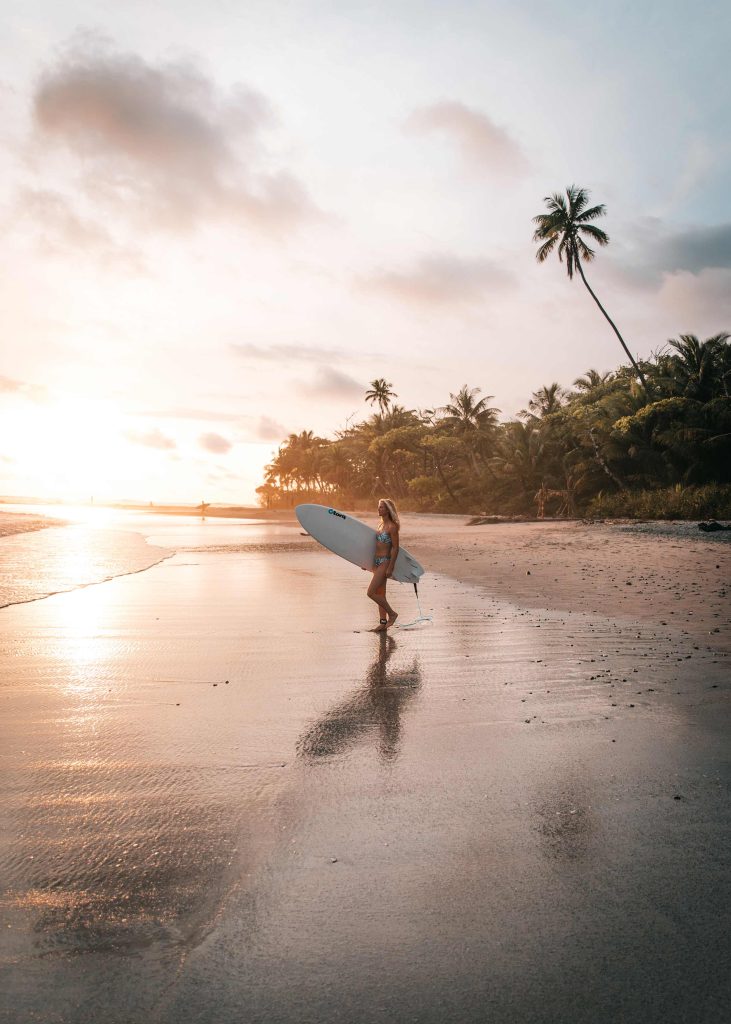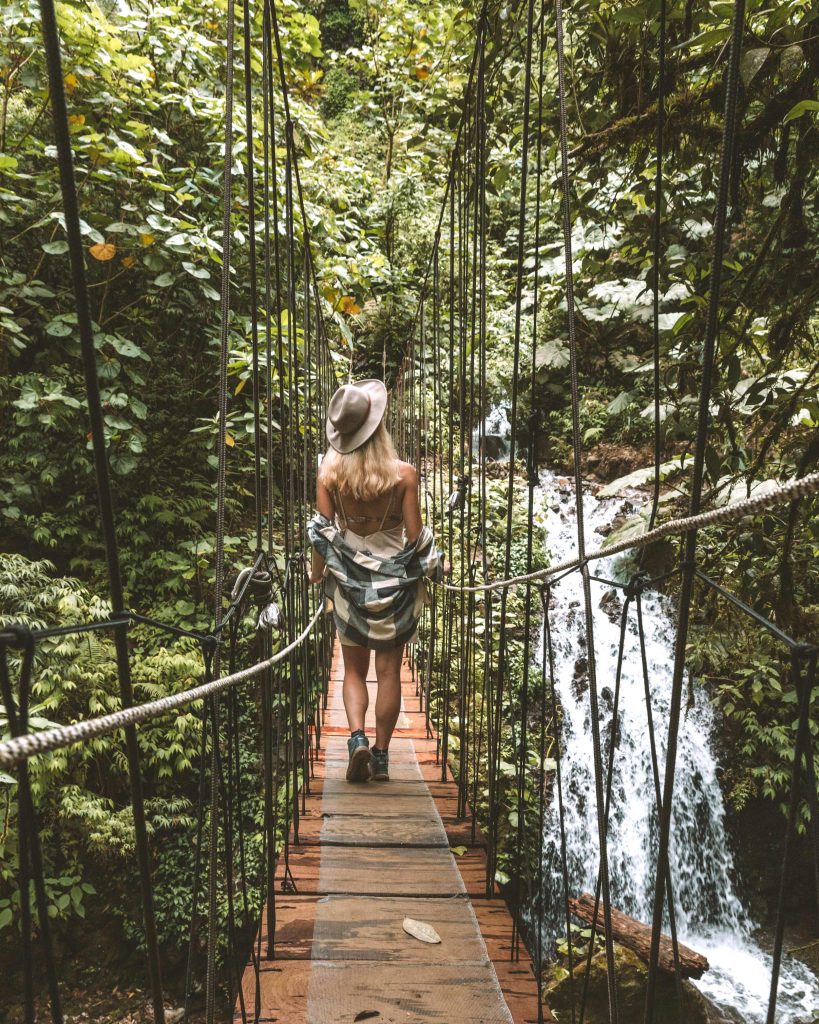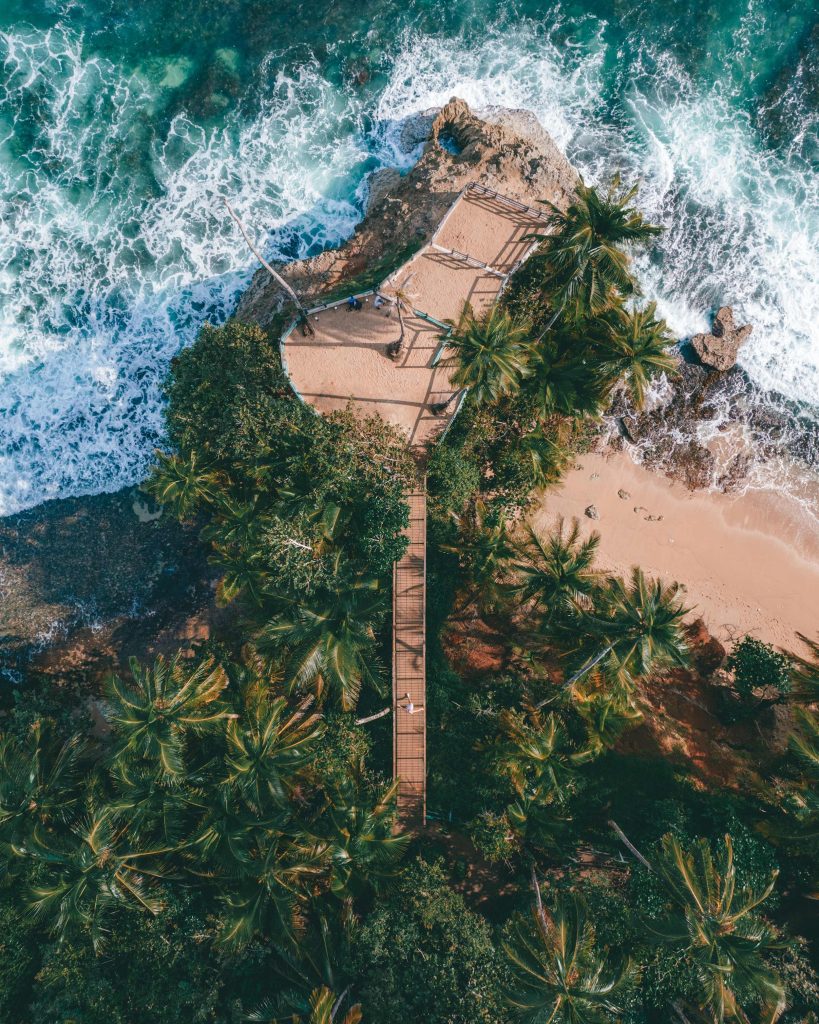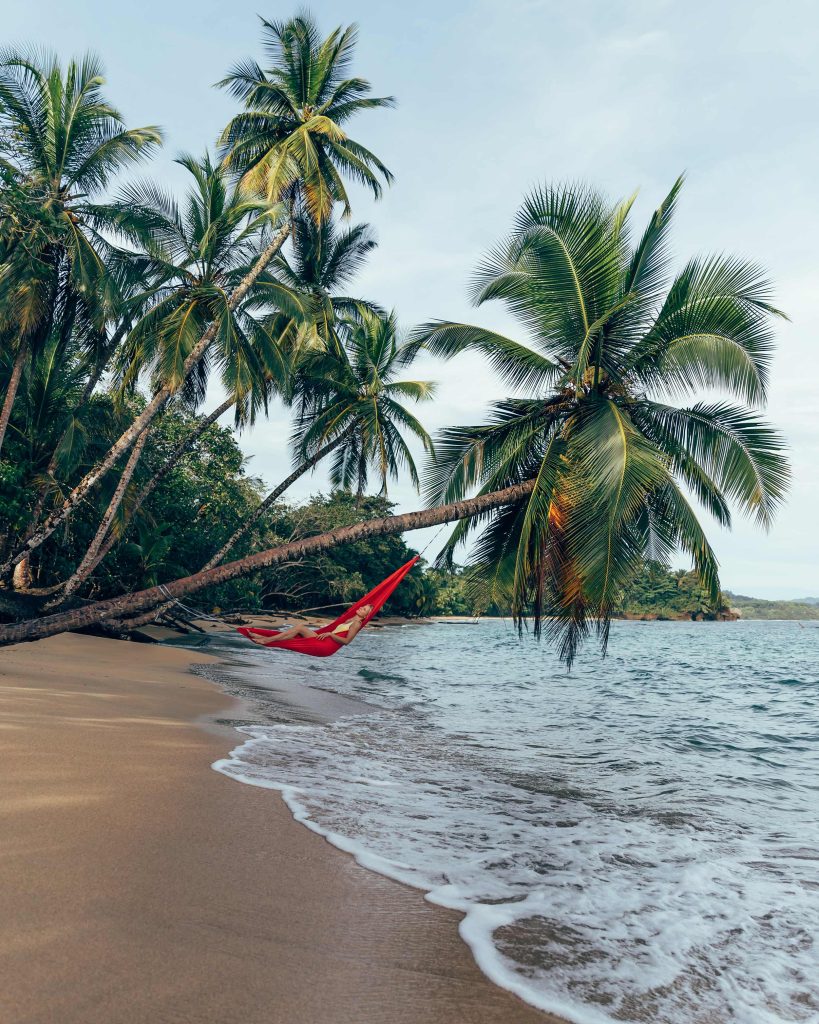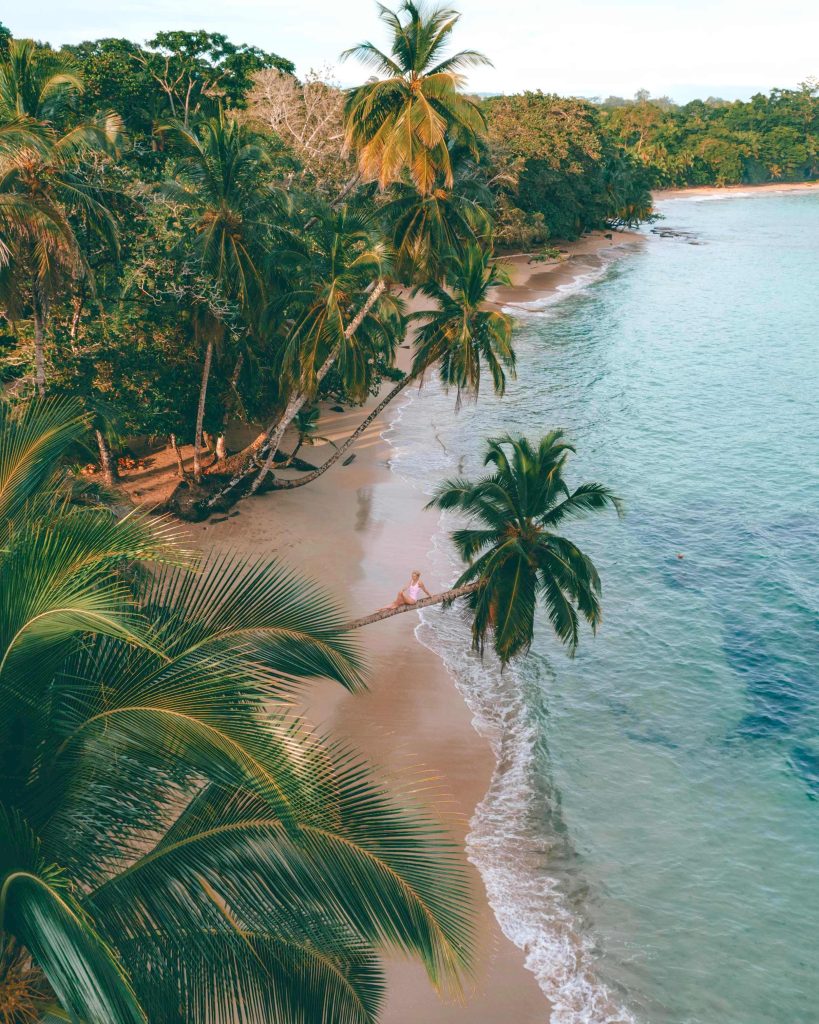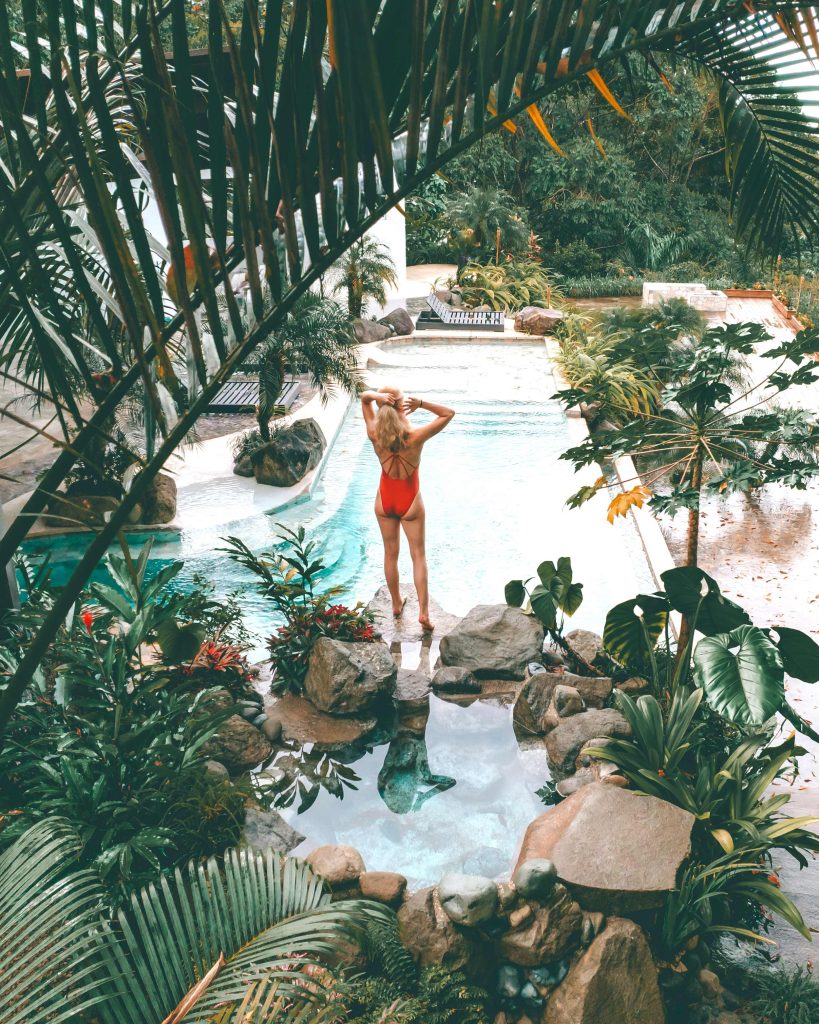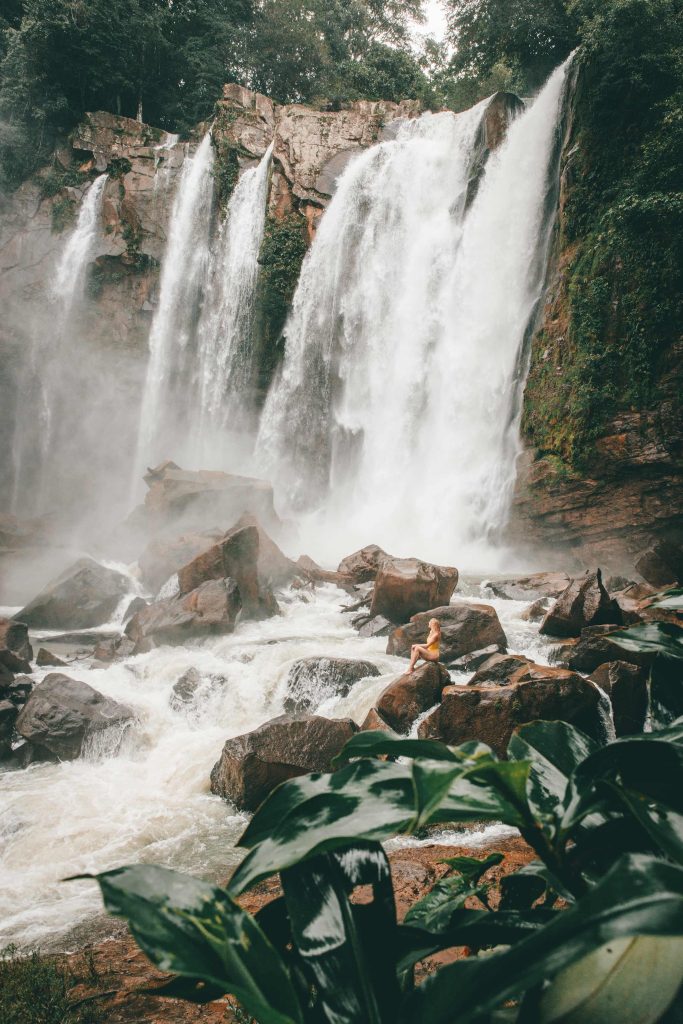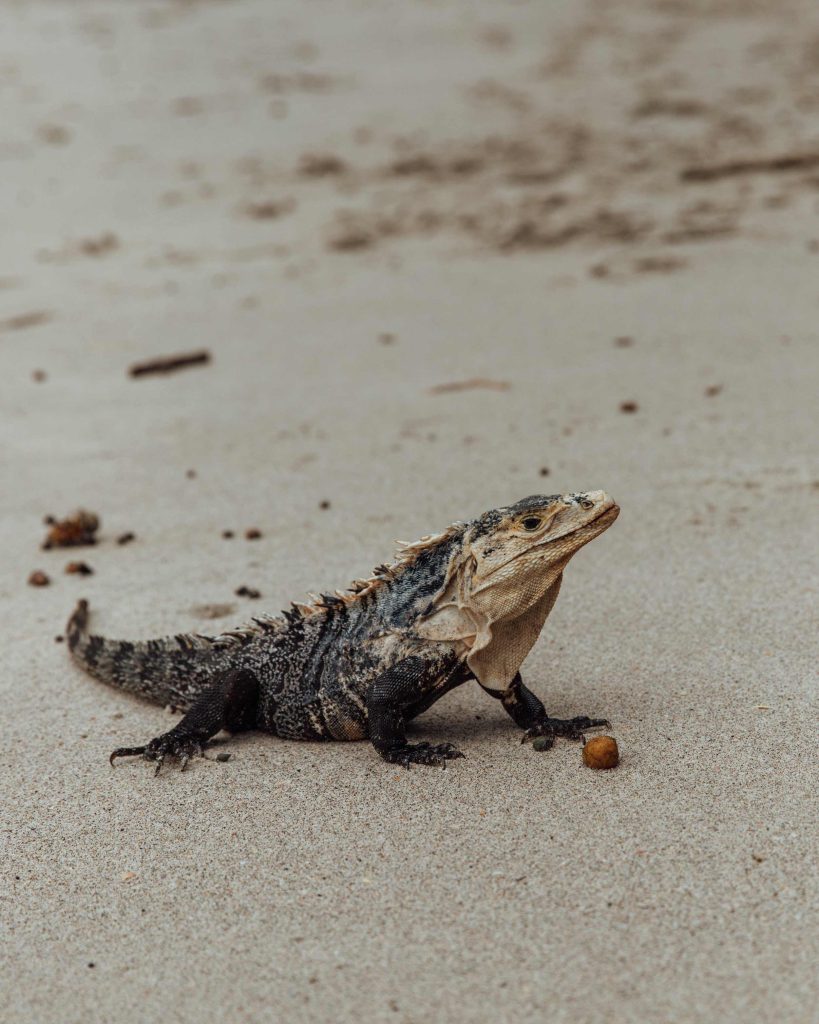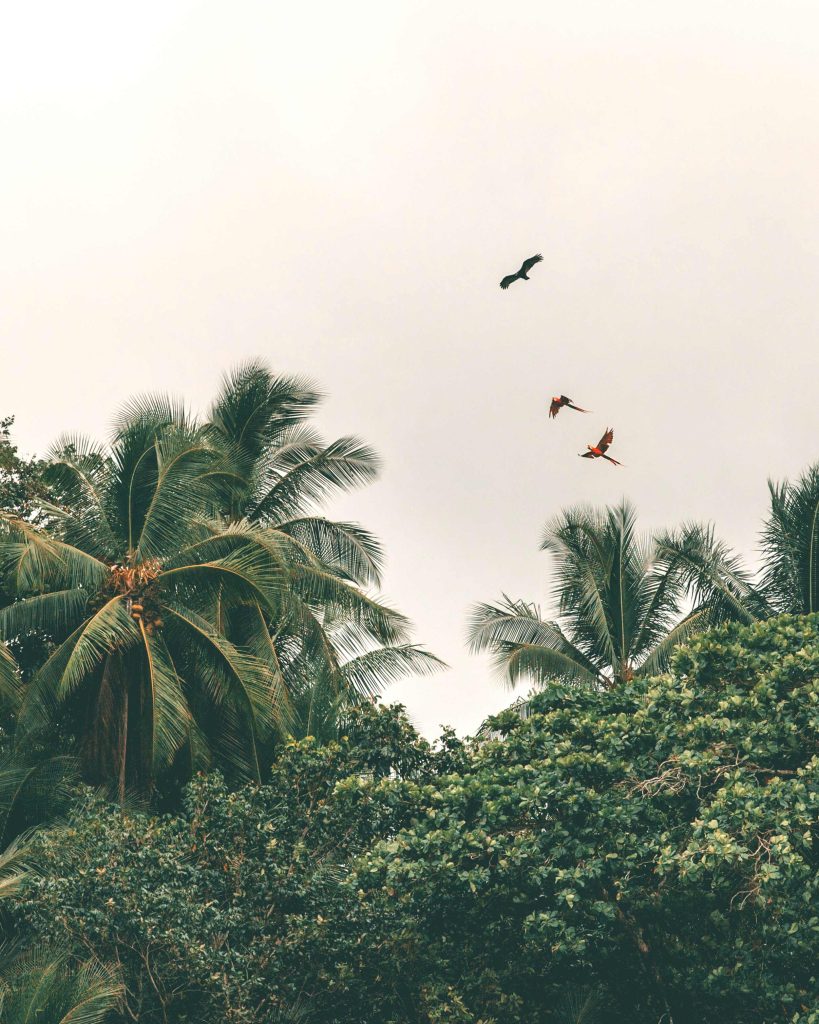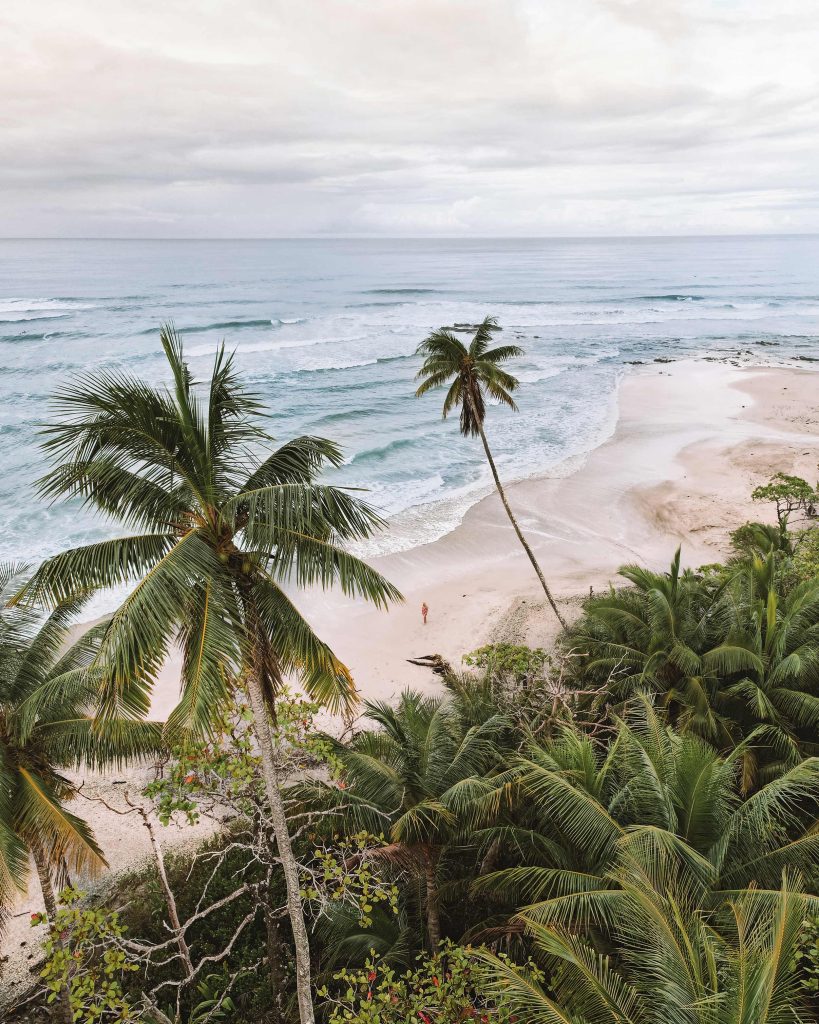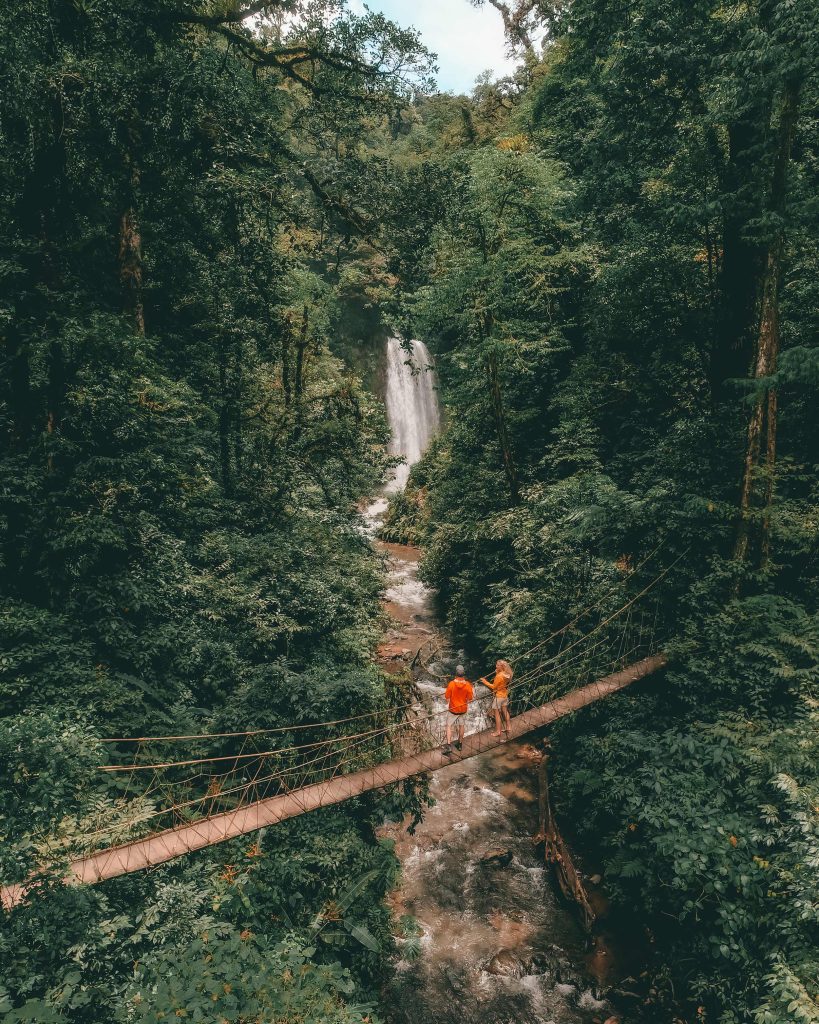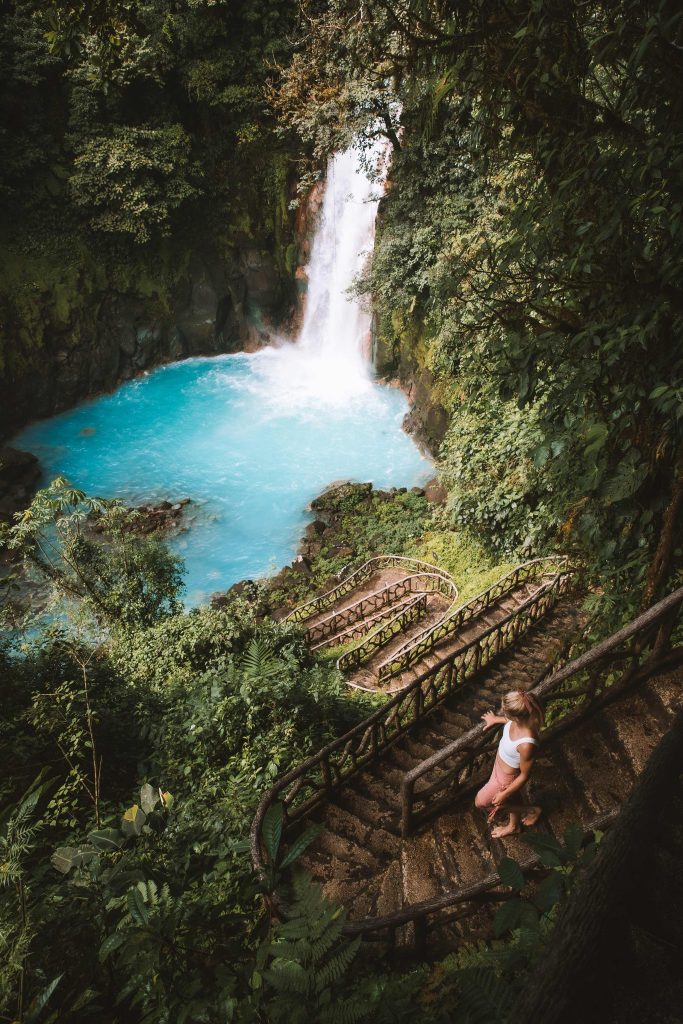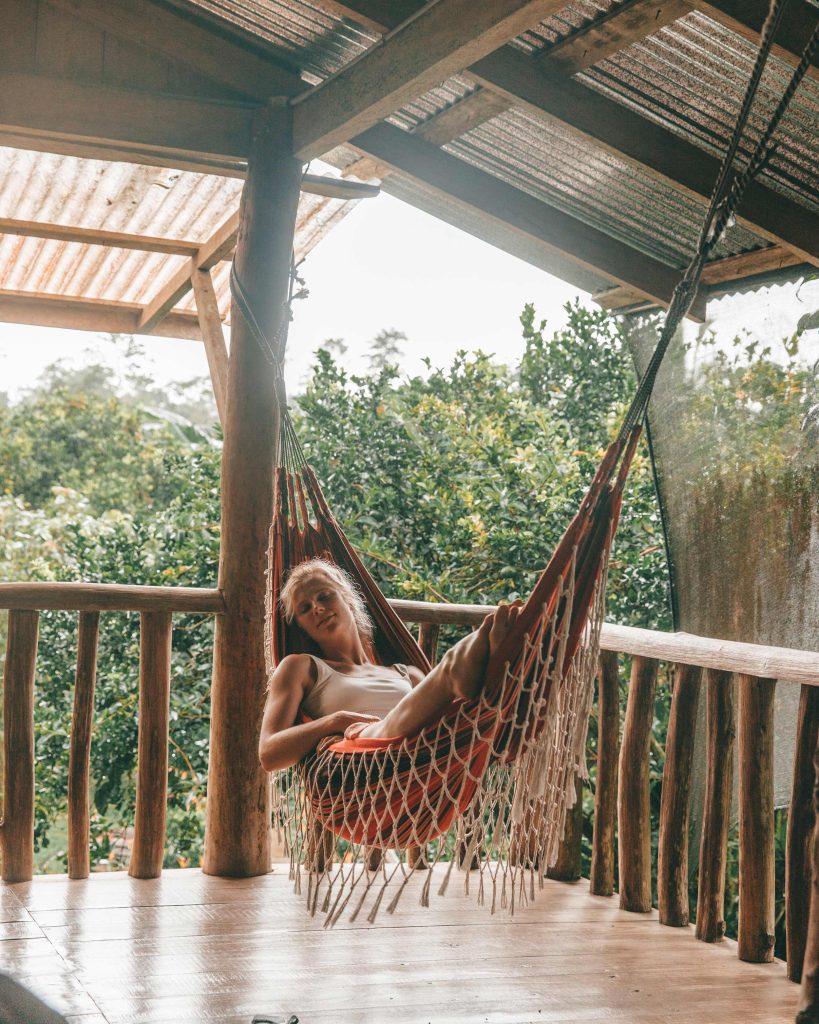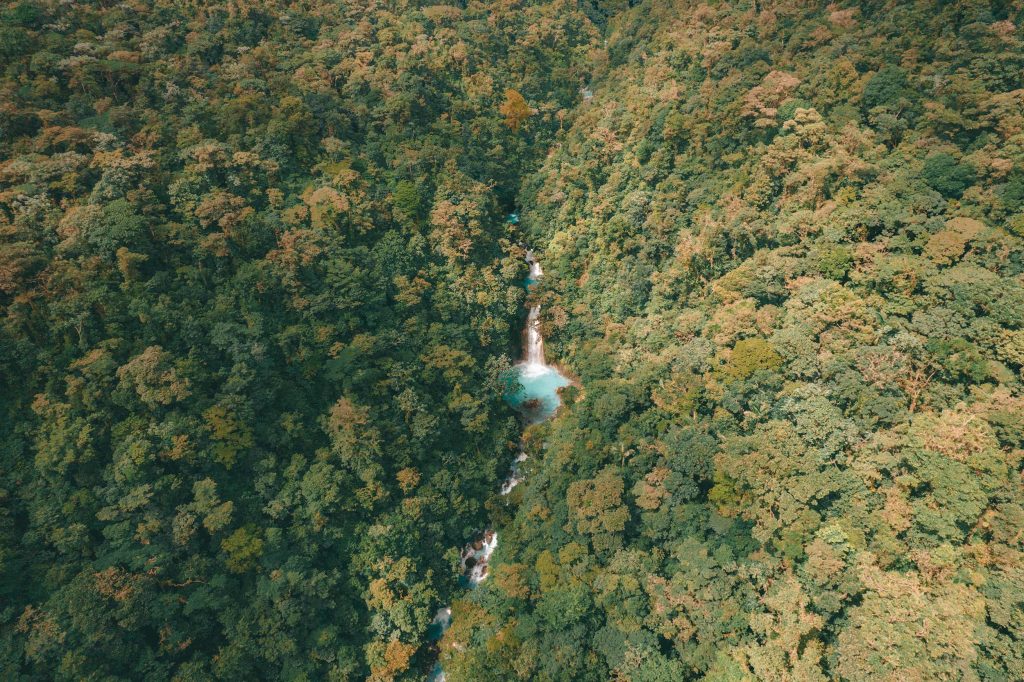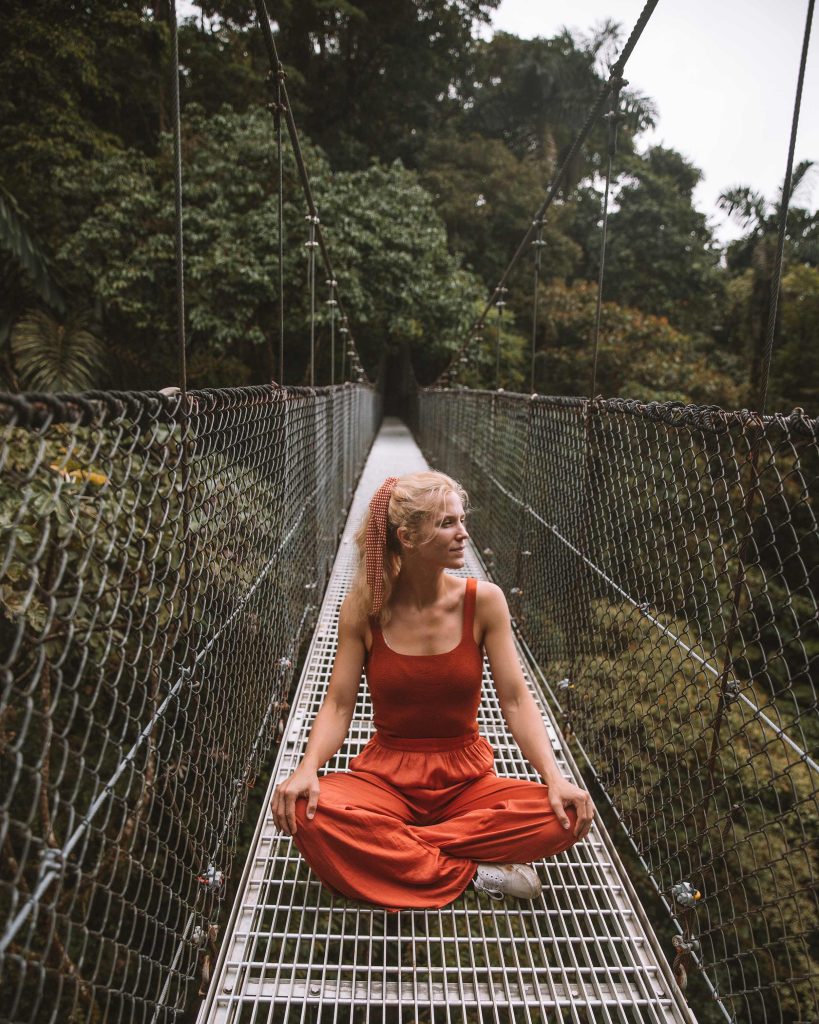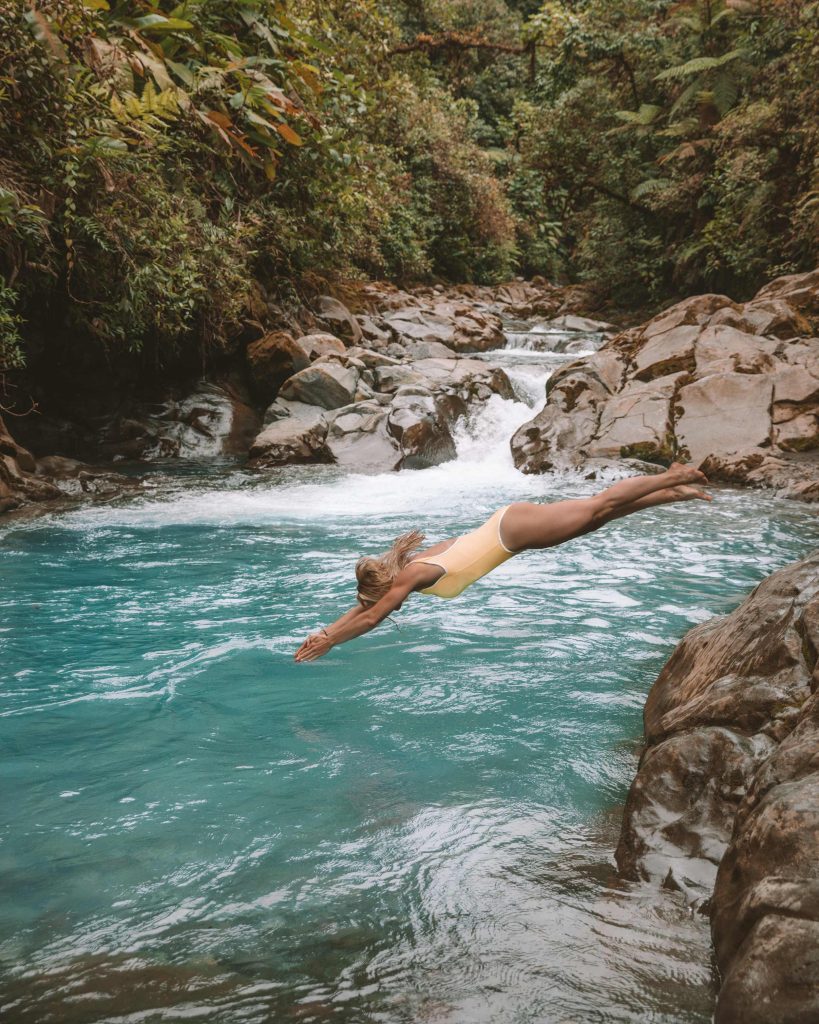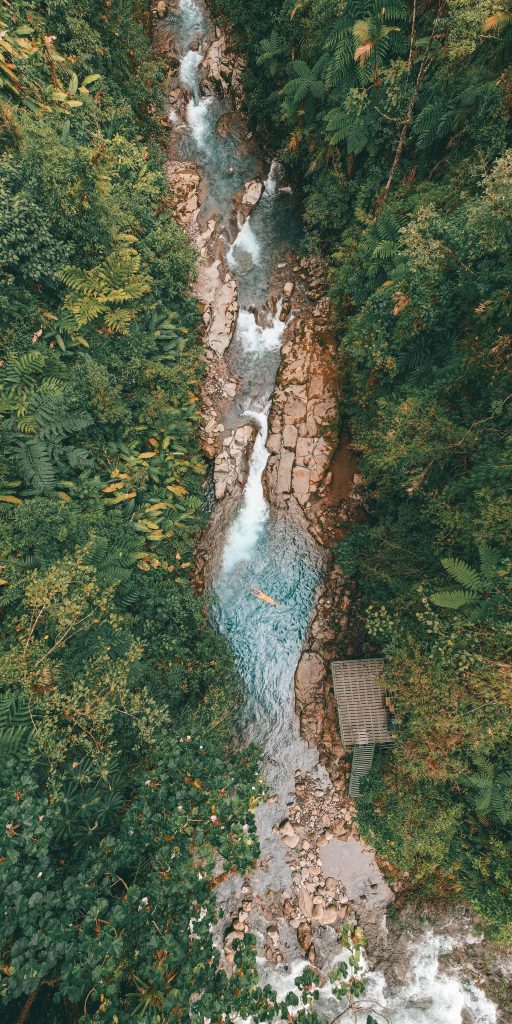Our 3-week Roadtrip in Costa Rica
Our 3-week Roadtrip in Costa Rica
–
We are back from our crazy 3-weeks road trip through Costa Rica and still are totally enchanted by the diversity of landscapes we’ve seen in this country. You can visit two oceans here – the Caribbean, the Pacific and the mountain range with different microclimates in between – hike through the cloud forest, swing on hanging bridges, go surfing or snorkeling at the incredible beaches, swim in waterfalls, explore aktive volcanos, visit all the national parks and see howler monkeys, coatis, sloths, toucans, raccoons and many more. Although Costa Rica is a small country, it contains 6 percent of the world’s biodiversity! Costa Rica is the perfect place for a road trip the whole year long!
____________
Get your rental car in San José ✓
Drive 3.5 hours to Puerto Viejo de Talamanca ✓
____________
1. Visit the Caribbean Coast (Limón), Day 1-4
We highly recommend including the Caribbean Coast to your Costa Rica itinerary, especially this chilled, laid back, hippie city Puerto Viejo near the border to Panama. Puerto Viejo belongs to the district Limón and is also called the second Jamaica. This place is a backpackers paradise, since there are a lot of young people around, co-working spaces, vegan restaurants, cheap places to stay at, good food and a wonderful relaxed vibe. All year long, you will face temperatures around 27-30 degrees. We would recommend to spend here at least 3 nights, since there are a lot of beaches and two National Parks to check out!
What to do?
– See all the animals in Cahuita NP and Playa Negra
– Playa Cocles
– Playa Punta Uva (the perfect palm tree!)
– Playa Punta Uva de Arrecife
– Playa Puerto Viejo
– Manzanillo National Park (shipwreck, snorkeling)
– Puerto Viejo town (hip, restaurants, stores)
– Rescue center for sloths
– Bribri Waterfall
Where to eat?
– Como en mi Casa (vegetarian/vegan)
– Puerto & Co Coworking Space (vegan)
– Tiki Bar & Restaurant (vegan options)
– GypSea Café (smoothie bowls)
Where to stay?
– Awa Beach Hotel !!!
– Almonds & Corals
↠ Read more: “What to do at the Caribbean Coastline of Costa Rica?“
____________
Drive 7 hours to the Pacific Coast, Uvita ✓
____________
2. Pacific Coast (Puntarenas), Day 4-7
As much as we recommend to visit the Caribbean Coast, you should definitely not skip the Pacific Coast on your Costa Rica trip. The Pacific Coastline is known for its perfect surfing conditions, beautiful beaches with hundreds of palm trees and amazing National Parks. There are several cities at the Pacific Coast, we liked Uvita the most. Uvita, which belongs to the district Puntarenas, is also the perfect base to explore Manuel Antonio and Marino Ballena National Park, the famous Nauyaka Waterfalls or for starting a Corcovado National Park multi-day trip. We would spend at least 3 nights in Uvita.
What to do?
– Marino Ballena National Park and Uvita Beach (beach shaped like a whale fin)
– whale watching boattrip
– Playa Hermosa
– Dominical
– Nauyaca Waterfalls
– Alturas Wildlife Sanctuary
– Manuel Antonio National Park
If you drive the coastline north to the ferry stop here:
– Jaco Beach
– Crocodile Bridge
Where to eat?
– Indómitos (veggie and vegan) !!!!!
– The Fringe Umbrella (near Manuel Antonio)
Where to stay?
– Vista Celestial Boutique Hotel (you need a 4×4 to get there!)
↠ Read more: “Explore the Pacific Coastline of Costa Rica!“
____________
Drive 2.5 hours to Corcovado National Park ✓
____________
3. Visit the Corcovado National Park on a multi-day tour, Day 7-9
Corcovado National Park is located on the remote Osa Peninsula south-east of Uvita. The National Park was established in 1975 and covers over 400 square kilometers. It’s actually the largest park in Costa Rica, the jewel in the crown. It’s still one of the less visited National Parks since it’s not easy to get there, and gives you still an off-beaten-path adventure. However, there are great hiking trails, a lot of wildlife and beautiful remote beaches. You can see tapirs and anteaters, sloths and squirrel monkeys, colored macaws and majestic margay cats.
If you have enough time for your Costa Rica trip, don’t skip this National Park! There are some wild camp grounds and ranger shelters if you like a deep nature experience or you book days tours and stay in a hotel like:
Lapa Rios Lodge or Hotel Kunken Lodge.
Most tours start at Drake Bay and includes boat rides and hikes to Playa Sirena or La Leona and around the whole National Park. There are also hikes through the middle of the forest, like El Tigre, Los Patos or next to Corcovado lagoon, which offer some of the top wildlife spotting. On some trails it’s necessary to cross rivers. Between Isla de Cano and the shore you can see whales and dolphins.
____________
Drive 2.5 hours back from Corcovado to Uvita ✓
Drive 2.5 hours to Puntarenas (Stop in Jaco and Crocodile Bridge) ✓
Take the ferry 1.5 hours to Paquera ✓
Drive 1.5 hours to Santa Teresa ✓
____________
4. Feel the beach vibes at the Nicoya Peninsula (Puntarenas), Day 9-12
With its charming laid back lifestyle, perfect waves and incredible healthy food, Santa Teresa got the hot spot and dream destination for remote working people, person who opted out, surfers and tourists. Santa Teresa is located on the Nicoya Peninsula belonging to the district Puntarenas in Costa Rica. The fastest way to get there is by ferry from the main land. Once Santa Teresa was a sleepy small fishing village located on the western edge of the Peninsula. The last few years this place recently developed to a tourists attraction like Tulum or Canggu. However, until now it’s still a very raw and wild village with gravel roads and without big hotel complexes. It still convinces with bohemian spirit, yoga classes, wild surfer beaches and cute handicraft shops. We would spent at least 3 nights in Santa Teresa to really soak in the vibes! If you skip Nosara (5.) consider to stay 5 nights in total in Santa Teresa.
What to do?
– Go surfing!
– Playa Santa Teresa and Playa Carmen
– Playa Hermosa !! Most beautiful beach!
– Montezuma day trip (30 min by car from Santa Teresa)
Where to eat?
– Vermú Café!!
– Cafca Café
– The Bakery
– Earth Café
– Eat Street!!!
– Café Social
Where to stay?
– Selina Santa Teresa
– Santa Teresa Surf Vista Villas
– Villa Cacao
Co-working spaces:
– Outside Santa Teresa
– Sky Loft – Coworking in Paradise
↠ Read more: “Feel the beach vibes of Santa Teresa“
____________
Drive 4 hours to Nosara (gravel roads) ✓
____________
5. Visit Nosara (Guanacaste) in the North of Santa Teresa, Day 12-14
If you liked Santa Teresa and Montezuma, and if you have enough time on your road trip, we highly recommend to drive the coast further north to Nosara. Unfortunately the sand roads are very bumpy, therefore you need 4 hours. However, Nosara is the little sister of Santa Teresa. A little less popular, but with the same vibes as in Santa Teresa! It’s also perfect for surfing and has some really nice cafés, too! If you don’t want to drive up north add the 2 nights to Santa Teresa (4.).
What to do?
– Playa Carrillo
– Samara Beach (nice palm trees)
– Nosara town
If you want to go further North:
– Tamarindo Beach (surfing and turtles)
– Playa Grande (surfing)
– Playa Conchal (turquise water)
Where to eat?
– Café Social Nosara
– El Jardin Café at Playa Guiones
– Coyol restaurant (nice swing)
Where to stay?
– Selina Nosara
– Boutique Lagarta Lodge Nosara
– Villa Costa Sol Nosara
____________
Drive 3.5 hours to Monteverde ✓
____________
6. Visit Monteverde (Puntarenas), Day 14-16
Although there is no ocean in Monteverde, walking through the Cloud Forest and crossing hanging bridges really is a highlight that you should not miss! There are a lot of different parks offering different packages for wildlife spotting, hiking and zip-lining. Imagine yourself standing on an hanging bridge, looking at a beautiful waterfall, surrounded by the jungle and in the background the sounds of howler monkeys. Most likely you will spot some sloths or a coati somewhere.
The jungle in Costa Rica is so stunning! This country is home to approximately 5 % of the world’s biodiversity, although it’s such a small country! That explains why national parks as the Monteverde Cloud Forest Reserve are such beautiful places. It is home to an incredible array of exotic birds, animals and plants. Divided into six distinct biological zones, the Cloud Forest covers a staggering 10.500 acres, making it one of the largest nature reserves in Costa Rica. The Cloud Forest spans the provinces of Puntarenas ans Alajuela.
What to do?
– El Tigre Waterfalls Monteverde!!! (3,5 hours hike)
– Monteverde Cloud Forest Reserve
– Santa Elena Reserve or Curi Cancha Reserve
– Go Zip-lining (Original Canopy Tour, Sky Adventures, Aventura, Selvatura)
– Cerro Pelado (4 km hike)
Where to stay?
– Monteverde Rustic Lodge
– Hotel Bosque Verde Lodge
– Jaguarundi Lodge
– Selina Monteverde (noisy, party)
↠ Read more: “Cloud Forests and hanging bridges in Monteverde“
____________
Drive 3 hours to Rio Celeste (you can take a stop at Cataratas Llanos de Cortés waterfall) ✓
____________
7. Rio Celeste in the National Park Volcán Tenorio (Alajuela), Day 16-18
The Parque Nacional Volcán Tenorio belongs to the district Alajuela and is famous for the bluest waterfall of Costa Rica. Rio Celeste with this light blue waterfall, is located north-west of La Fortuna (the town at Parque Nacional Volcán Arenal) and north of the big Laguna de Arenal. Rio Celeste is a great stop for 1 to 2 nights, if you drive from Monteverde to La Fortuna or otherwise. You can also visit Rio Celeste within a day trip from both towns. We found a wonderful cacao lodge to stay at in the middle of nature at the food of Parque Nacional Volcán Tenorio. You can learn everything about the cacao process here.
What to do?
– Rio Celeste in the National Park Vulkan Tenorio (be very early! no swimming!)
– Cacao Farm tour and chocolate workshop at Finca Amistad
– Horseback Riding or mountainbiking
– Rafting tour
– Cano Negro Wildlife Refuge
Where to stay?
– Finca Amistad Cacao Lodge!!!
– Origins Lodge
↠ Read more: “Visit Rio Celeste in the Parque Nacional Volcán Tenorio”
____________
Drive 1 hour to La Fortuna – Volcán Arenal ✓
____________
8. A lot to do in La Fortuna – Volcán Arenal (Alajuela), Day 18-20
La Fortuna’s main attraction is the Volcán Arenal. A few years ago, the volcano regularly erupted, though unpredictable. The Arenal Volcano suddenly stopped erupting in 2010. Today, only a small amount of smoke can be seen escaping from the volcano’s crater. However, the view of the volcano is still very beautiful and you can experience some of the hot springs at the food of the volcano, go hiking and visit the famous Mistico Hanging Bridges Park. You can also go zip-lining, canyoning and much more. We would recommend to stay at least 2 nights in La Fortuna, belonging to the district Alajuela of Costa Rica.
What to do?
– viewpoint for sunset of the volcano
– Mistico Arenal Hanging Bridges
– La Fortuna Waterfall
– Hot Springs in La Fortuna town
– Free Hot Springs: Tabacon River, El Salto
– Hikes at Arenal Volcano National Park
– Hikes at Arenal 1968 Volcano View and Lava Trails
– Hike Cerro Chato volcano and lake
– Borgarin Trail
– boat trip at Laguna de Arenal
Where to eat?
– Café Organico Fortuna !!! (lots of vegan options)
– Arábigos Coffee House
Where to stay?
– Selina la Fortuna
– Tabacon Hot Springs
– The Springs Resort and Spa
↠ Read more: “What to do in La Fortuna – Volcán Arenal”
____________
Drive 2.5 hours to Poás Volcano ✓
____________
9. Crater of Poás Volcano and pools of Pozas Celestes (Alajuela), Day 20
There are two incredible things to do just a 1.5 hour car ride away from the capital city of Costa Rica, San José. Visit the light blue crater lake of the Poás Volcano and the incredible surrounding volcano landscape. Afterwards, hike to the Rio Agrio waterfall and take a swim in the deep blue and cold outdoor pools Pozas Celestes. You can either do a day trip from San José or take a stop on your way from Volcano Arenal to the capital city. Poás is an active volcano with two craters sitting on 2.700 metres above sea level. The crater lake is one of the most acidic in the world, having a pH of around zero. This makes the lake very toxic but also gives it an intense blue color. This large active crater is 1.5 km wide.
What to do?
– Poás Volcano National Park
– Pozas Celestes natural pools
– Rio Agrio Waterfall
↠ Read more: “Poás Volcano and Pozas Celestes Pools”
____________
Drive 1.5 hours back to San José ✓
Return your rental car ✓
____________
Road trip 3 weeks or 2 weeks?
If you don’t have time for 3-weeks in Costa Rica you can easily shorten the itinerary to 2-weeks. Just skip the Nicoya Peninsula (Santa Teresa) for example, or Corcovado National Park, or the Caribbean. We would spend at least 2 weeks in Costa Rica. However if you are coming from America a lot of people do long weekend trips to Costa Rica and choose one area to explore.
Renting a car in Costa Rica – Do I need a 4×4?
In the dry season you don’t necessarily need a 4×4 car, since most streets are dry and paved. Just make sure that your hotels aren’t located on a hill with a steep gravel road that is only accessible by 4×4. In the rainy season everyone highly recommends a 4×4 or at least a 2×4. We rented a 4×4 in August and almost everyone seemed to drive a four-wheel car on the roads. Especially at the Nicoya Peninsula around Santa Teresa there are a lot of dirt roads, which can get really muddy and slippery in the rainy season. Also, we had one hotel located on a hill with a very steep road, we were very lucky to have a 4×4 there. Four-wheel cars aren’t that expensive to rent in Costa Rica, since it’s the normal car here.
Is it save? What about the language?
We felt absolutely safe in Costa Rica. In fact it’s one of the safest countries in Central / South America. There are a lot of attended parking lots, but I think it’s more for the locals, who can earn some money while watching the tourist cars. We parked at beaches under the trees and at the side of the street and nothing ever happened, in fact a lot of people do. Like everywhere else in the world, don’t leave any expensive things or bags in your rental car. If it gets busy in a town, watch your belongings. Also, as a woman I felt absolutely save!
In the bigger hotels, touristic cafés and restaurants the locals often speak English. But actually at the rural areas and in smaller hotels or airbnb they often only speak and understand Spanish. It helps a lot to know some Spanish, at least the basics! However, we visited with very basic Spanish knowledge and used the google translator offline app, which worked pretty well. The translation is really good and every local understood us. They use translation apps, too.
What about the costs – is it expensive?
Compared to Asia, Costa Rica is very expensive. But I would say prices for food, hotels and for national park fees are similar to Germany. Everything in Costa Rica is a national park, which is good for protecting flora and fauna, but you have to pay everywhere 10-20 USD per person to get in. Luckily rental cars and gas is cheaper. You can keep your expenses low, if you stay in a private room of a hostel, get a cheap rental car or even take the cheaper public bus and choose 3 of the best national parks. Luckily a lot of beaches are free to visit.
Best time to visit Costa Rica?
Dry season: December – April
High chance of no rainfall and clear blue sky. February, March and April are the hottest months. It’s also high season and national parks and beaches are more crowded.
Rainy season: May – November
It stays hot and humid. Mornings are usually sunny and clear and it will start raining in the afternoon. It often rains throughout the night. September, October and beginning of November are the rainiest months. We’ve visited in August and had clear skies in the morning and heavy rain in the afternoon and night. Just start your day early and relax in a restaurant or hotel when it starts to rain. The Caribbean actually have 2 rainy periods in the rainy season, in August and September there is usually less rain and a lot of sun. The Pacific Coast around Uvita usually faces heavy rain showers the whole rainy season in the afternoon and night. At the Nicoya Peninsula around Santa Teresa and Nosara, the weather is usually better and less rainy.
Anzeige / ad: The hotels, restaurants and companies we mentioned above didn’t sponsor us. All our recommendations are always based on our own opinion.
Follow our journey on Instagram
